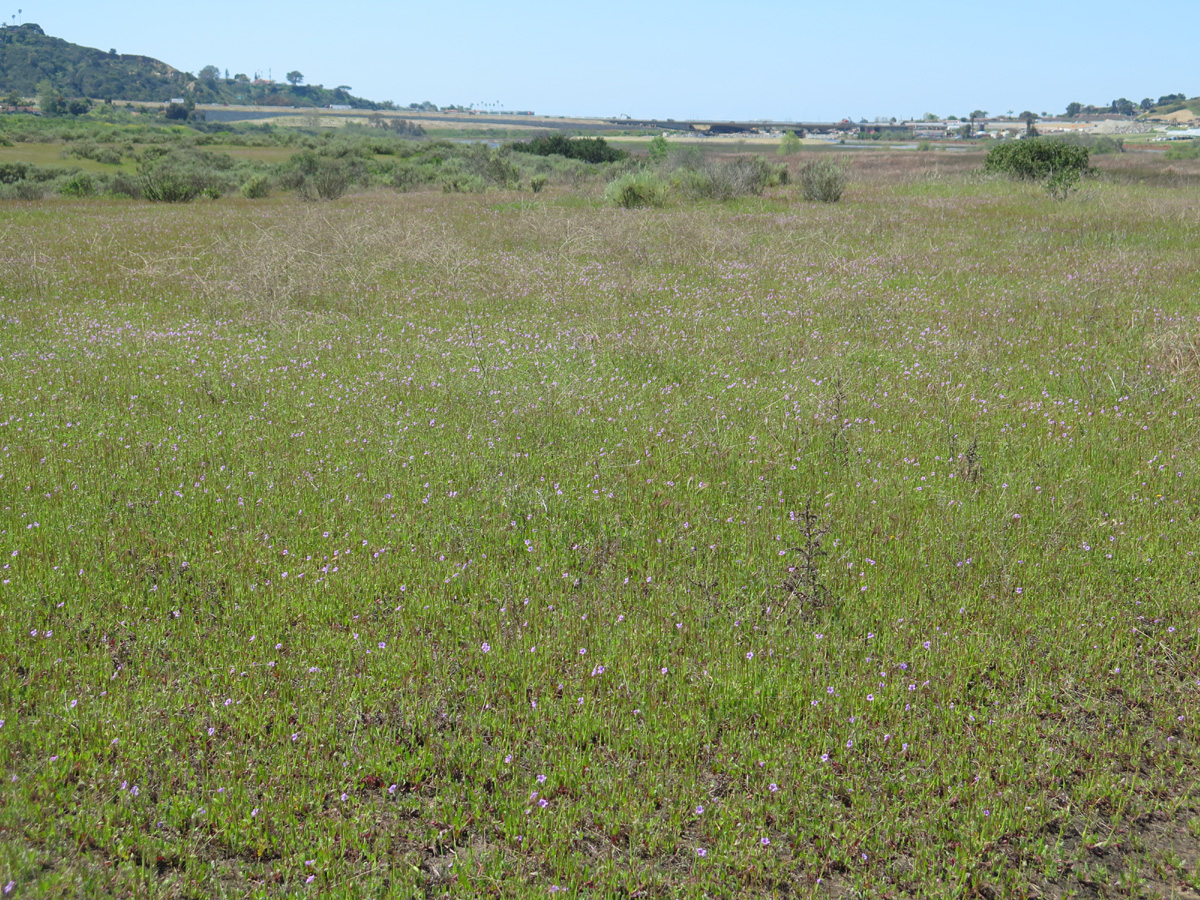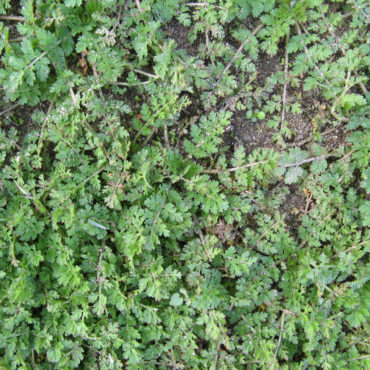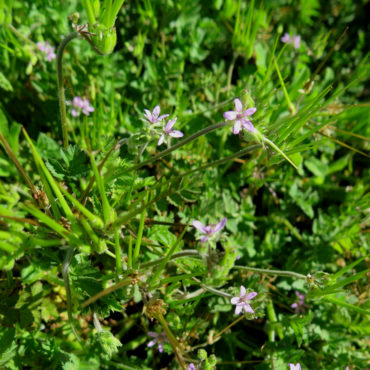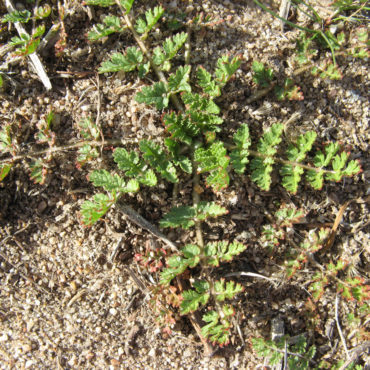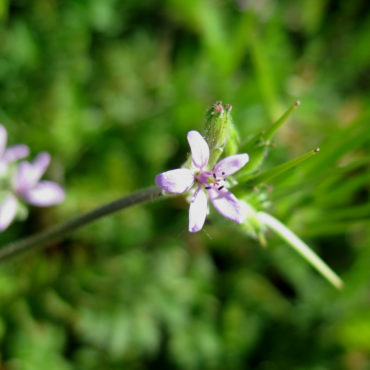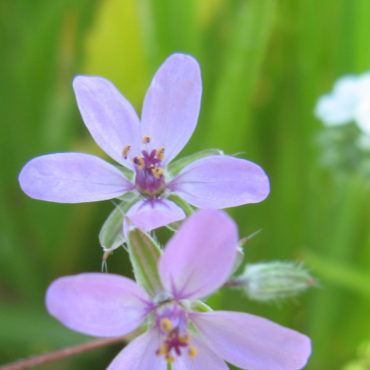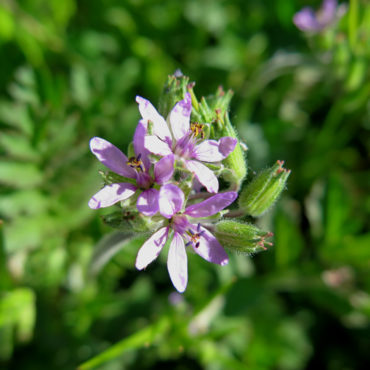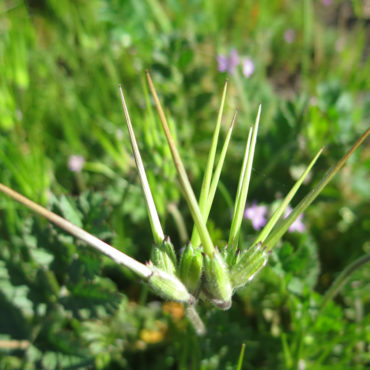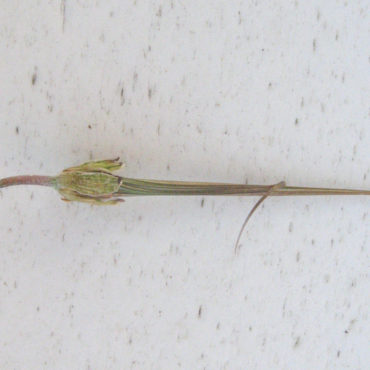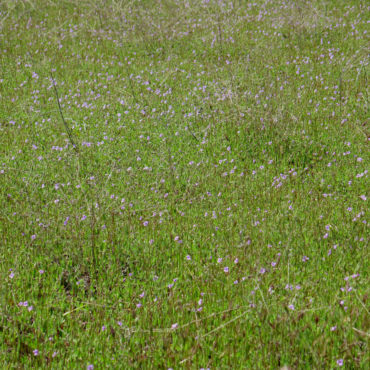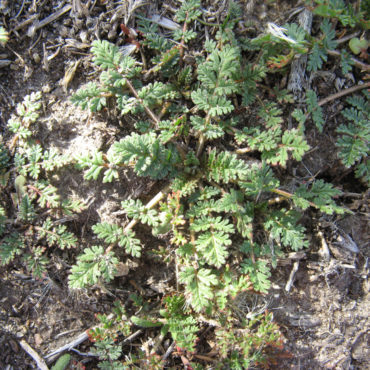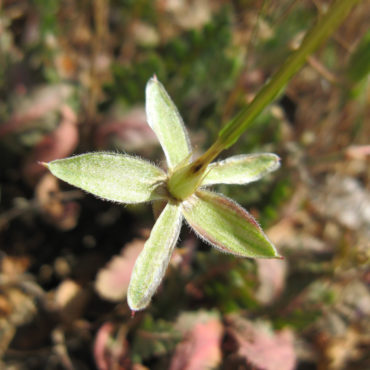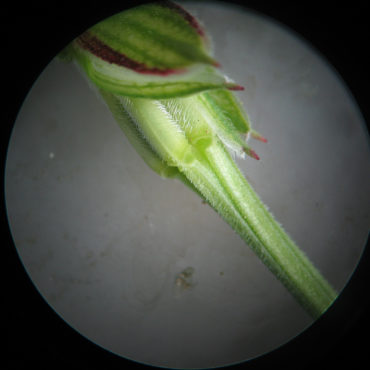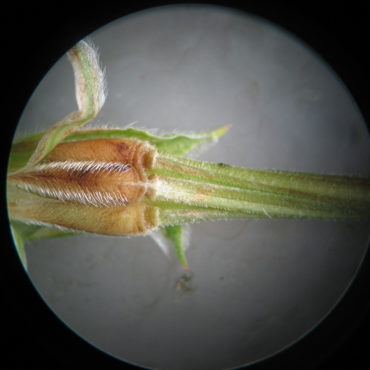The San Elijo Ecological Reserve is home to four similar, non-native species in the genus Erodium, often called filaree. The species also bear several names involving bird beaks and alfilerilla, from the Spanish word for pin. The most common Erodium species is redstem filaree (E. cicutarium). Redstem filaree is an aggressive spreader and often carpets newly disturbed areas before native species can regain their hold. In the Reserve, filaree rarely invades establish plant communities but is a pesky problem in areas being revegetated. As fast as the non-native plants are removed, the filaree moves in.
On the other hand, species of filaree are excellent forage for horses, cows and sheep – better than most of our native grasses and forbs which can not survive heavy grazing pressure from domestic livestock. As described by Cronise in 1868 474
… To the eye alfilerilla is a flattened tuft, hugging the ground. It appears to give scarcely a fair hold to the bite of cattle, but, if lifted up, it shows a great mouthful.

